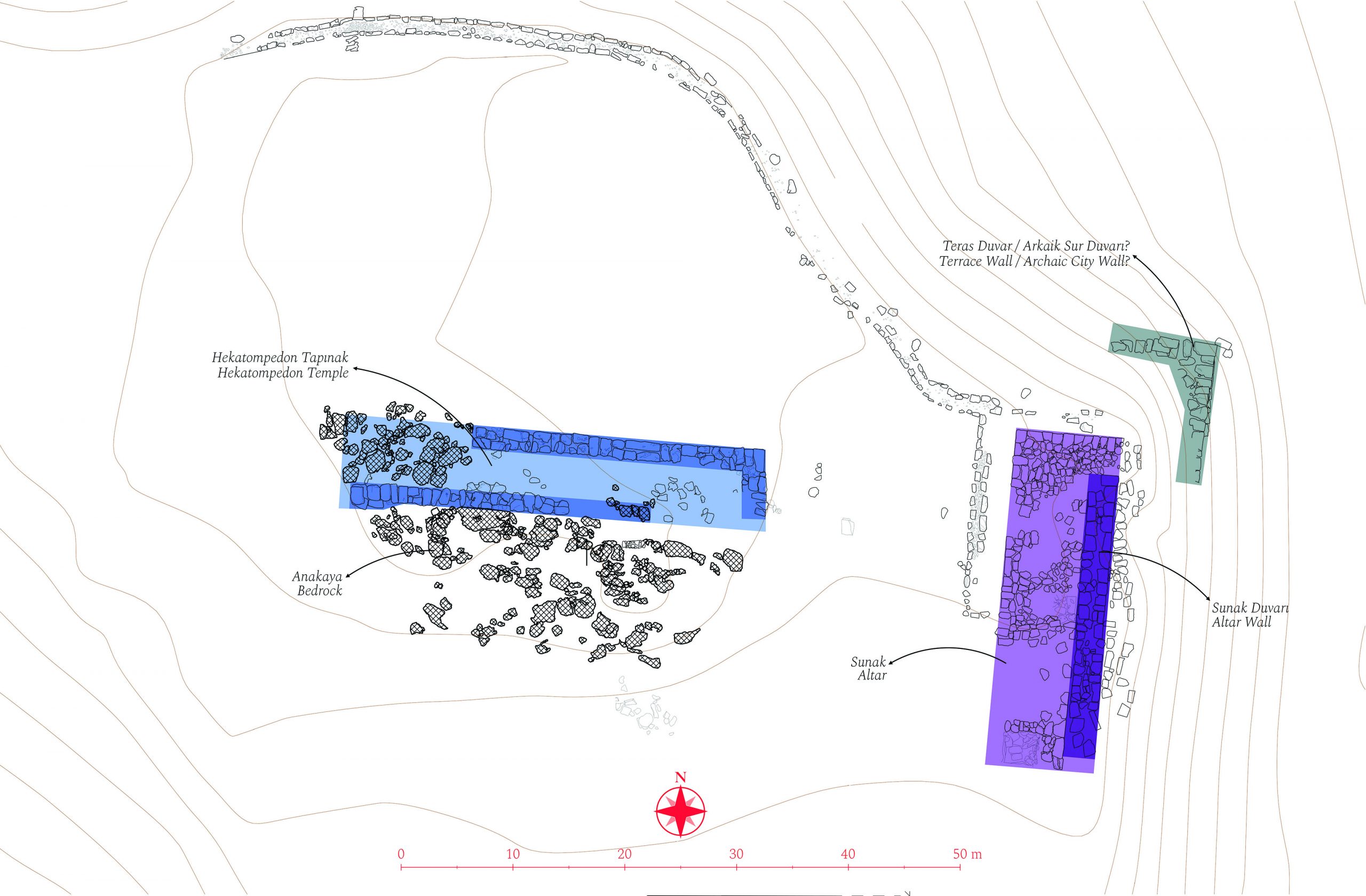
Aerial Photograph of the Acropolis of Teos, Hekatompedos and altar (Kadıoğlu, 2021, 136, Figure 49a)
The Acropolis of the ancient city of Teos is located on a rocky hill known as Kocakır Hill, overlooking the city’s northern and southern harbors. An outcrop running east-west is located on top of the hill. Remainings of a temple named hekatompedon adjacent to this outcrop, an altar which belongs to this temple and the terrace wall/archaic city wall(?) that supports these structures on the east of the hill are the main parts of the acropolis that survived to this day.
The traces of the structure called Hekatompedon, named because it is approximately 100 feet long (hekaton=100, pous=foot), can be seen on the north side of the bedrock located at the highest point of the Acropolis. At the northern edge a flat foundation layer made of chipped stones running east-west placed directly on the bedrock. South of this another foundation layer running east-west rests on the cut bedrock. The height of the bedrock increases towards the west where the western part of the structure rests on the cut bedrock, while the eastern part rests on foundation blocks directly placed on the bedrock as on the north side. No dowels or clamps were used in the connection of these smoothly cut rectangular foundation blocks. The fact that rectangular blocks do not bear traces of tooth chiselling on the surface suggests that the structure can be dated to the mid-6th century BC.
To the east of the Hekatompedon temple, there is a rectangular foundation layer measuring approximately 7 by 27 meters. The fact that both the Hekatompedon temple and the foundation layer to its east were constructed with a deviation of 5 degrees from the north-south direction indicates that these two structures were built simultaneously under a single project. The position and vertical orientation of these foundation remains, which are thought to have been erected as part of the same project, suggest that these foundation remains are an altar belonging to the temple of Hekatompedon. Approximately 2.25-meter double-walled structure that borders the foundation layer from the east supports the foundation structure against the increasing slope to the east.
In order to build an Altar and a functional space around it, terracing and a strong support wall required against the increasing slope on the east side of the hill. The terrace wall surrounding the altar area from the east and north not only allowed this area to be created, but may also have served as a defense system during the Archaic period. According to historian Herodotus, the Persian general Harpagos conquered the city by heaping up earth in front of the city walls. These walls, which surround the Acropolis from the north-east, are probably the walls mentioned by Herodotus.

Archaeological map of Teos and its surroundings (Kadıoğlu, 2021, 25, Map 4)

Archaeological map of Teos and its surroundings (Kadıoğlu, 2021, 25, Map 4)

